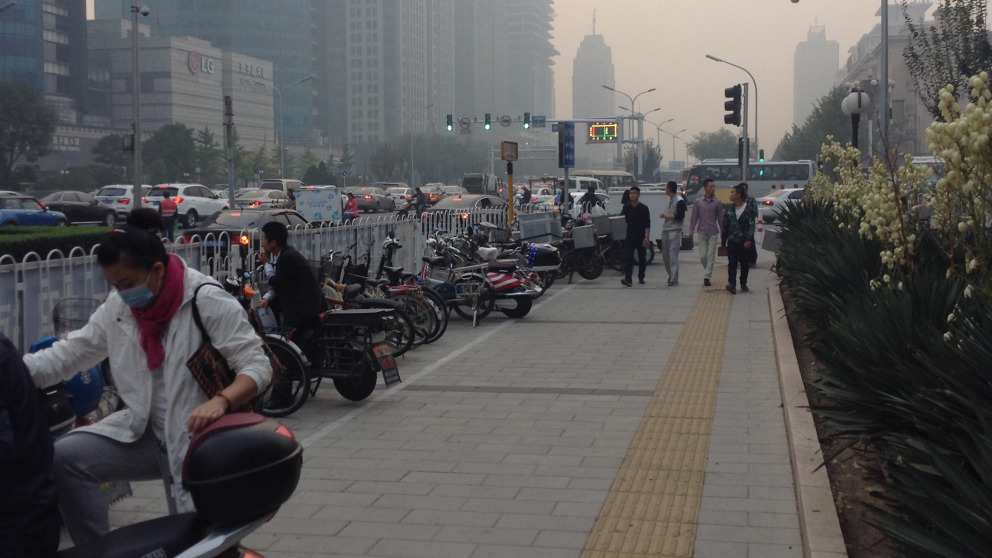Headline:
Governing the Climate in Cities

Urban areas account for more than 70% of CO2 emissions from burning fossil fuels. If the top 50 emitting cities were a single country, its emissions would rank third globally, behind China and the United States. In addition to playing a major role in rising atmospheric CO2 and global warming, cities are also heat islands. A heat island is formed on the one hand from waste heat emitted from cars, poorly insulated buildings and industrial plants, and on the other from heat stored and reradiated from the artificial surfaces that cover our cities. As a result of these two phenomena, urban residents experience double heat stress, which increases during heatwaves.
Yale University organised a workshop addressing the twin challenge for cities: mitigating greenhouse gas emissions and local climate effects. As one of the panellists, I gave a presentation about the climate and carbon cycle of cities and participated in the panel discussion. The workshop brought together researchers and practitioners at the forefront of the science and implementation of urban climate change mitigation. A new worldwide study of the heat island effect indicates that this effect increases in warmer climates. The temperature difference between urban and rural sites ranges from between 0.4–1.7°C in the north to 8.9–12.9°C in tropical latitudes. There are a number of options to mitigate the heat island effect, including painting roofs white or planting greenery on them. The extent to which such measures can offset heat depends again on the geographic location of the city. While it is well known that cities are responsible for the lion’s share of CO2 emissions from fossil fuels, at the workshop it was shown for the first time that the urbanisation effect on the global carbon cycle, which is vital for maintaining life on our planet, extends beyond that. Urban dwellers create new carbon pools such as buildings and landfills and control an appreciable fraction of the CO2 flux from the atmosphere to land.
The workshop took place in China’s capital, Beijing, at the recently opened Yale China Center. Covered with a thick blanket of air pollution for most of the year, this megacity with 20 million residents exemplifies the challenges that many inhabitants of our urbanising planet may face in the future, if climate and air mitigation measures are not implemented in good time. China has introduced a central sustainable development plan in an attempt to rise to these challenges. Low-carbon, green, and eco are becoming buzzwords in China. Among other things, this strategy entails a move away from energy sources based on fossil fuels, especially coal. Future energy sources in China will be more diverse and include nuclear, hydro, gas, coal, and renewables, with nuclear energy accounting for the largest share. In justifying this decision, the Chinese say that the risks associated with nuclear energy are smaller than those of other energy sources, especially coal mining. The World Bank has issued policy recommendations for Chinese cities in which it advocates the creation of a unified and vibrant market for the sale and purchase of land; a transition from superblock to smaller fine-grained housing blocks; integrated land use and transport planning; and a redefinition of the role of government in the market for the sale and purchase of land.
According to the panellists in the implementation session, the main obstacles to implementing these sound policy recommendations are finances (two thirds of local taxes go to central government) and the incompetence of local authorities, who simply do not know how to implement them. The practices and positive experiences of local governments are often neglected and not shared. There are, however, some good examples. Measures limiting personal car use in cities (e.g., the lottery to get permission to own a car in Beijing) and the promotion of bicycles and scooter traffic are widespread. According to the Chinese Natural Resources Defence Council (NRDC), which is closely involved in the implementation of low-carbon policies, the city of Hangzhou is currently the world’s leader in public bike rentals with 400,000 renters a day. Programmes to recycle waste, re-use clothing, etc. have been introduced in the southern provinces, which historically have faced less pressure from the central government.
The Institute for Sustainable Communities is helping to involve several local communities in the aforementioned activities. Although the twin challenge for cities addressed in this workshop was not new to me, the magnitude of the associated challenges and their implications for the quality of life of urban dwellers became clear to me after this workshop, which was cleverly held in a polluted, already overpopulated, but still growing city. The dialogue between scientists studying feedbacks between urbanisation and climate change, organisations giving advice on environmentally sound practices locally, and practitioners implementing these practices has to continue to ensure that our future cities are still pleasant to live in. An important event in this regard is the Climate Summit for Local Leaders at COP21 in December, where mayors will set more ambitious targets for reducing urban carbon emissions and discuss policies for achieving these targets including transportation, city's buildings, innovative and smart infrastructure networks, water use and waste management.
Photo: Galina Churkina
